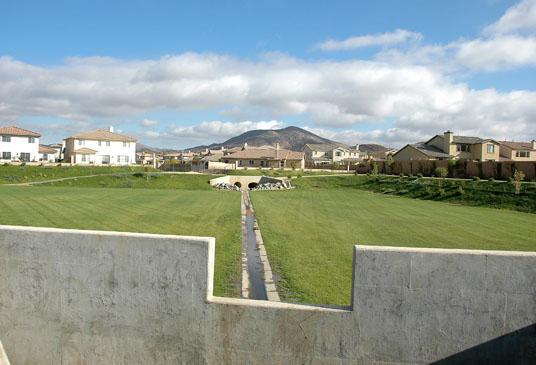District Overview
Who are we?
The District was created July 7, 1945 by an Act of the California State Legislature. The District (2700 sq. mi.) is located in the western portion of Riverside County (7200 sq. mi.). It extends easterly far enough to include the cities of Palm Springs, Cathedral City and Desert Hot Springs. The District is governed by a Board of Supervisors comprised of the same individuals as the Riverside County Board of Supervisors.
Why were we created?
Following the devastating floods of 1938, the Board of Supervisors saw the need for a regional drainage authority and petitioned the California State Legislature to create such a body. On July 7, 1945, the Legislature took the appropriate action and the Riverside County Flood Control and Water Conservation District was born. In establishing the District, the Legislature not only formed an entity charged with keeping county residents safe from flood hazard but also established an independent tax revenue stream for funding. Before the District's inception, severe flooding regularly occurred throughout much of the County. Today, through effective engineering, dam and channel construction, regulation, and public education, massive flooding is far less common.
What does the District do?
The purpose of the District is to provide the following:
- Identification of flood hazards and problems
- Regulation of floodplains and development
- Regulation of drainage and development
- County Watercourse and Drainage Planning
- Education for Flood Prevention & Safety
- Construction of Flood Control Structures and Facilities
- Flood Warning and Early Detection
- Maintenance and operation of completed structures

Mission Statement
"We responsibly manage stormwater in service of safe, sustainable, and livable communities."
Jason Uhley, General Manager-Chief Engineer
How is the District funded?
The Flood Control District is a special district rather than a County Department, and as such, receives a dedicated share of property taxes – about 3-7%. In addition to property taxes (which are the chief income source), other revenue sources for the District include developer fees and cost sharing arrangements with other governmental entities. Today, the District has an annual budget of approximately $212 million and total assets of $1.06 billion.
What is the District's jurisdiction?
The Riverside County Flood Control and Water Conservation District is the regional flood management authority for the western part of Riverside County. As a Special District, Flood Control’s jurisdiction does not extend over the entire County but only the western 40%. The responsibility for drainage in the eastern part of the County is borne by a combination of the County Transportation Department, the Coachella Valley Water District, the various cities and a variety of local entities. The District does provide certain non-tax supported functions (such as Floodplain Management, development review, NPDES compliance, etc.) for the entire County. And unlike a County Department, the District has authority to expend tax dollars within city boundaries as well as within unincorporated areas.
How is the District organized?
The District’s 239 employees are divided into eleven Divisions:
- Construction & Maintenance
- Design
- Developer Services
- Emergency Management & Government Affairs
- Finance
- Operations
- Planning
- Regulatory
- Surveying & Mapping
- Watershed Analytics
- Watershed Protection
The Planning Division develops watershed specific Master Drainage Plans, manages and modifies mapped floodplains and partners with other agencies and developers to design and construct drainage facilities. Developer Services includes Development Review, Plan Check and Contract Services, which review and coordinate with proposed land developments throughout our District. The Design Division develops and prepares project specific hydrologic, hydraulic and structural designs for a variety of drainage facilities, including underground storm drains, detention basins, dams, levees and open channels with costs ranging from as little as $10,000 to more than $12,000,000. The Emergency Management and Government Affairs Division oversees large federal infrastructure projects and administers grants. The Regulatory Division is responsible for all local, state and federal environmental approvals for District construction and maintenance activities, and other discretionary actions. The Watershed Protection Division assumes the lead role in coordinating and implementing the District’s, Cities and the County of Riverside National Pollution Discharge Elimination System (NPDES) Municipal Separate Storm Sewer System (MS4) permit compliance programs. These six Divisions are supported at every juncture by the other five Divisions, which provide such services as photogrammetry and mapping, surveying, accounting, human resources, information technology support, operations and maintenance support, and administrative functions.

